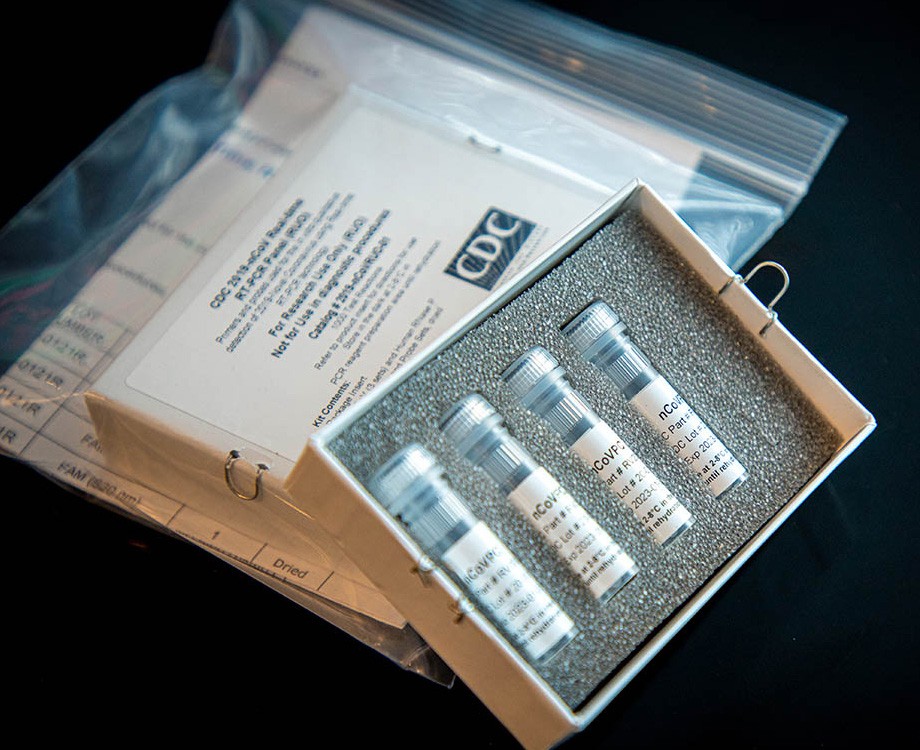As the novel coronavirus crept up the Hudson Valley, infecting people in counties from Westchester to Greene, one area seemed to hold out longer than the rest.
Columbia County, a rural community with one small city and a population just shy of 60,000, didn’t report a confirmed case until March 20. The Columbia County Department of Health had started putting out COVID-19 updates early in the month; it continued each day after the first reported case, listing the numbers of people tested, of people who tested positive, and of people under mandatory and precautionary quarantine. There was no mention of any deaths.
The Columbia County Board of Supervisors was also releasing information—posting online updates with precautions to keep people safe and updating them on how the county government was addressing the pandemic. Press releases dated Monday, March 23, and Wednesday, March 25, stated there had been no hospitalizations from COVID-19 to date.
But neither claim was accurate. A man had died in Columbia County of a suspected case of COVID-19 on Sunday, March 22. Another person was hospitalized Monday and continued to be hospitalized as of late Thursday.
The man who died was Maurice Berger, an internationally renowned art critic, curator, and cultural historian. He died in Craryville, a hamlet near the Massachusetts border, of complications from the coronavirus, according to Thomas Moore, a longtime colleague of Berger’s at the University of Maryland, Baltimore County (UMBC). He was 63 years old.
Berger primarily lived in New York City, according to UMBC. His death of COVID-19 was reported by multiple publications on Tuesday, including the arts publications ARTnews and Hyperallergic, as well as the Los Angeles Times and The Baltimore Sun.
However, the county made no mention of the death until asked by the regional media outlet The Other Hudson Valley on Thursday, four days after Berger died.
A spokesperson for the county Department of Health said Thursday they were aware of the death, but it was impossible to confirm it was from COVID-19, since Berger was never tested.
“At the time of the [Monday] press release, there was a death, but the person was never hospitalized and never tested, so we don’t know if it was suspected or not,” says DOH spokesperson Patricia Abitabile. “We don’t know what they expired from, because there was never a test for that person.”
The county was straining to work with a limited number of tests, she added.
New York is struggling to fight the coronavirus with a critically limited number of test kits. Counties in the Hudson Valley have turned away people with symptoms and who have arrived from international travel feeling ill. County officials throughout the region have said there are an insufficient number of tests since the virus started to impact their communities. On Thursday, Columbia Memorial Health, in Hudson, announced it would only be testing medical providers, emergency responders, and the very ill, according to Columbia County Department of Health director Jack Mabb.
The issues with the tests predate the virus’s arrival in the region.
The first wave of test kits was produced by the US Centers for Disease Control and Prevention (CDC) and distributed by the federal government to the states. New York then distributes them among the counties.
For reasons that remain unknown, the CDC decided to develop its own tests instead of using tests concurrently being developed by the World Health Organization (WHO). The US is the only country in the world to do this. Nearly six weeks ago, on February 6, the WHO announced it had shipped 250,000 tests to more than 70 laboratories around the world.
The day after WHO sent out its tests, the CDC sent out enough test kits to state labs to test 50,000 people, according to The New Yorker, but the majority did not work properly when calibrated at the state labs during a process called “verification.” It took another three crucial weeks for states to be able to use the CDC tests.
In the meantime, once Health and Human Services secretary Alex Azar declared a public-health emergency on February 4, a new set of regulations went into effect: Any private lab that wanted to develop and conduct its own tests now had to seek an Emergency Use Authorization from the Food and Drug Administration (FDA), a process that takes time.
On March 11, Governor Cuomo announced during his daily coronavirus press briefing that he was taking matters into his own hands, contracting 28 labs across the state to work with the state Department of Health to develop and administer tests. “We’re not in a position where we can rely on the CDC or the FDA to manage this testing protocol,” he said.
Two days later, the FDA decided not to object to this maneuver, instead allowing laboratories to provide validation data to the New York State Department of Heath within 15 days in lieu of pursuing an Emergency Use Authorization with the FDA.
Insufficient testing, and the inconsistency of the tests early on, have made it nearly impossible to confirm and track COVID-19 cases in the United States as the pandemic has spread. The reporting of cases is lagging far behind actual infections, and sick people who cannot get tested are not being reported. Some of the hardest-hit areas, including New York City, have encouraged doctors not to test patients unless they think the test will significantly change their course of treatment.
That may be why Columbia County’s claim that no one in the county had been hospitalized also turned out to be false.
County DOH spokesperson Abitabile said director Mabb had not yet learned there was someone hospitalized with COVID-19 when supplying information for the Monday press release. It was not explained why the press release two days later also claimed there were no hospitalizations.
The unidentified person was still hospitalized Thursday, according to Abitabile. But a spokesperson for Columbia Memorial Health, the county’s only hospital, said that it had no known COVID-19 patients. It is not known if the person is hospitalized elsewhere.
UMBC released a eulogy after Berger’s death written by Moore, his longtime colleague, that called Maurice’s oeuvre “remarkable and difficult to quantify.”
“To him, it was every bit as important for his message to touch people in Waconia, Minnesota, or Moscow, Idaho…as urban centers like Baltimore or New York. He published books, wrote articles, engaged in online events, curated exhibitions, and would engage in conversation with any willing participant,” according to the eulogy.
“Maurice was a beloved member of the UMBC community, one of our most admired and productive scholars,” according to UMBC president Freeman A. Hrabowski. “For many of us, he was even more than that. He was a special colleague and friend. We will always remember him as a brilliant voice for the arts and justice…He believed in the dignity of humankind and the power of art and history to open our eyes.”
Roger Hannigan Gilson is a Hudson Valley journalist and humorist. A former crime reporter for the Register Star, he now runs the news site The Other Hudson Valley.

















